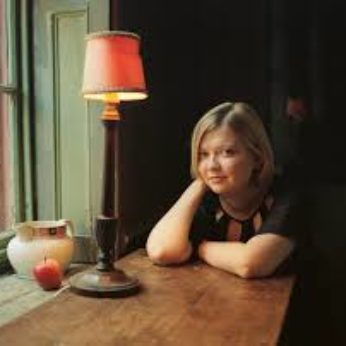Composer: Johann Sebastian Bach (b. 1685 - d. 1750)
Performance date: 27/06/2015
Venue: St. Brendan’s Church
Composition Year: 1717-1723
Duration: 00:11:58
Recording Engineer: Richard McCullough, RTÉ lyric fm
Instrumentation Category:Small Mixed Ensemble
Instrumentation Other: vn (2vn,va,vc, db, lute, hpd)
Artists:
Alina Ibragimova -
[violin]
Arcangelo (Sophie Gent, James Toll [violins], Rebecca Jones [viola], Sarah McMahon [cello], Tim Amherst [bass], David Miller [lute], Jonathan Cohen [harpsichord,director]) -
[baroque ensemble]

Perhaps some of J.S. Bach’s most recognisable works, the solo
violin concertos are a frequent favorite of violinists due to their deeply
dramatic atmosphere and potential for conveying the full gamut of the
instrument’s qualities. In both concertos Bach remains true to the three movement
form of the baroque concerto best exemplified in the work of Vivaldi. This
stylistic stance reflects Bach’s deep understanding of Vivaldi’s concertos,
painstakingly obtained through his practice of condensing entire orchestral and
solo parts into compact transcriptions for solo harpsichord performance. Built
upon the bedrock of this severe pedagogical exercise, the violin concertos
retain many formal similarities to the concertos of Vivaldi and Corelli, yet in
Bach’s hands these formal vessels are filled by a singularly detailed approach
to harmonic texture. Here everything is meticulously mapped, and the improvised
elements of the continuo evident in
the work of many Baroque composers is absent. It is perhaps this propensity of
Bach to sculpt every possible contour of the music that marks his compositional
style as a pinnacle of aesthetic stratification; the reified culmination of the
Baroque.
The first Allegro Moderato movement is built around a
tense melodic theme and a fearsomely steady continuo
section, its latent tension compounded by the wistfully urgent passages of
the solo violin. The tone is tragic and severe yet continuously exciting, the
listener being constantly propelled through perennially unfolding harmonic
textures and partial reiterations of the initial melody.
The second Andante movement is a tranquil and majestic
meditation, the plaintive melody cutting gracefully through the luxurious
accompaniment. Replete with fleeting moments of both melancholy dissonance and
gentle uplifting sentiments, our attention is held on a hairs breadth until the
final ebb of the ostinato bass pattern.
The third Allegro Assai movement is characterised by a
stormy burgeoning, the solo violin embarking on a headlong melodic unfolding,
its flight periodically punctuated by fragmented reiterations of the tutti section. A snarling crescendo of bariolage
bowing on the solo violin leads us into the final tempestuous ritornello
that concludes the concerto. In these last bars the themes of the movement are
tied into some all-too-few stunning moments of dark, beautiful concision.
Copyright © 2024 West Cork Music. All rights reserved.
Designed and developed by Matrix Internet